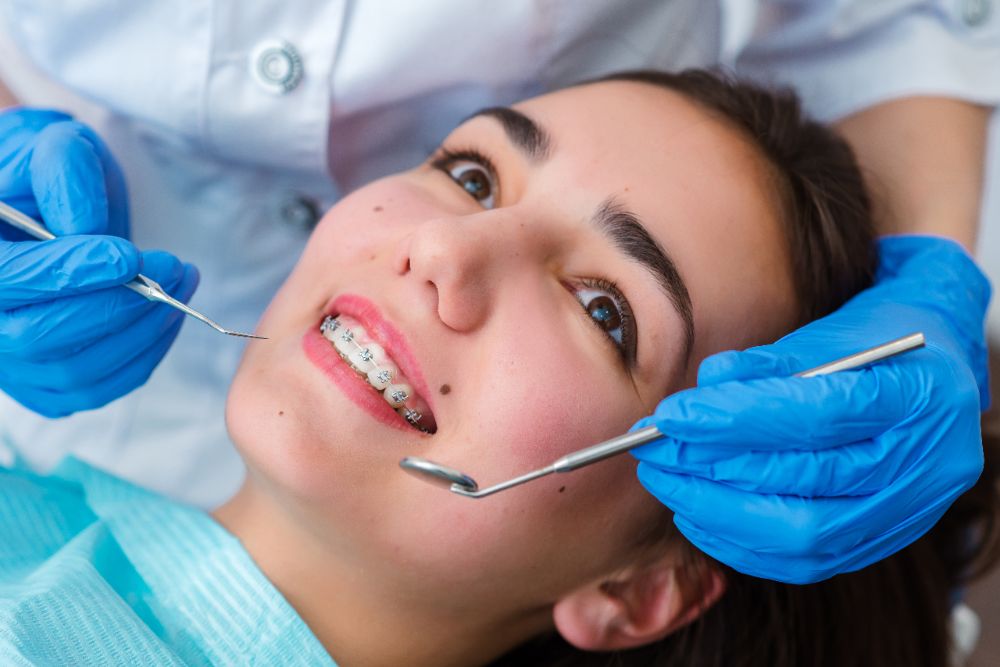Comprehensive Guide to Orthodontics Treatments for Correcting Oral Imbalances
In the realm of orthodontics, the journey to accomplishing a flawlessly aligned smile involves a myriad of procedures tailored to fix dental imbalances. From typical dental braces to invisible aligners and even surgical options, the field of orthodontics provides a series of options to attend to varying degrees of oral abnormalities. Recognizing the details of each treatment, including their systems, advantages, and potential disadvantages, is vital in making educated decisions about one's orthodontic treatment. As we navigate with the extensive guide to orthodontic procedures for remedying oral imbalances, the detailed information of each approach will unravel, shedding light on the path towards a useful and unified oral placement.
Orthodontic Procedures Review

Along with clear aligners and conventional dental braces, orthodontists might also advise various other interventions like headwear, palatal expanders, or retainers to address particular placement problems (cumming braces). These procedures are customized per client's one-of-a-kind needs and may entail a combination of treatments to attain the desired outcomes. Normal adjustments and tracking are crucial parts of orthodontic therapy to make sure progress is on track and to make any type of necessary modifications along the road. By undertaking orthodontic procedures, clients can not just achieve a straighter smile yet also improve their overall oral wellness and feature.
Conventional Braces: How They Work
When considering orthodontic treatments for oral imbalances, conventional braces stand out as a reliable method for fixing teeth placing. Typical braces consist of brackets, cords, and bands that function together to apply constant stress on the teeth, progressively relocating them right into the desired positioning.
One trick facet of how conventional dental braces job is the procedure of bone remodeling. As pressure is related to the teeth with the dental braces, the bone bordering the teeth is reshaped to support the brand-new tooth placements. This renovation is necessary for the long-term stability of the fixed positioning. People will need regular modifications at the orthodontist's workplace to make certain the braces continue to use the correct stress for effective teeth motion.
Unseen Aligners: Advantages And Disadvantages
These clear, customized trays are virtually undetectable when worn, making them an appealing choice for individuals looking for a much more cosmetically pleasing orthodontic therapy. Patients can eliminate the aligners prior to eating or cleaning their teeth, decreasing the threat of food getting stuck in the home appliance and simplifying the cleansing process.

Surgical Orthodontic Options
Surgical treatments in orthodontics existing sensible alternatives for resolving intricate oral misalignments that may not be efficiently dealt with through conventional orthodontic therapies. While unnoticeable aligners and conventional braces can deal with several orthodontic problems, particular instances require medical intervention to attain optimal outcomes. Surgical orthodontic options are typically advised for severe malocclusions, significant jaw disparities, and instances where the underlying bone structure requires adjustment to attain correct positioning.
One typical surgical orthodontic treatment is orthognathic surgery, which entails repositioning the jaws to correct practical problems such as trouble talking or eating. This surgical procedure is commonly carried out in partnership with an orthodontist who aids straighten the teeth prior to and after the treatment. Surgical orthodontics might also include procedures to expose influenced teeth, eliminate excess periodontal cells, or reshape the jawbone to produce an extra harmonious face profile.
Prior to taking into consideration surgical orthodontic choices, patients undergo an extensive examination to identify the necessity and potential advantages of such interventions. aligners. While surgical procedure might seem complicated, it can considerably improve both the feature and looks of the smile in situations where conventional orthodontic treatments fail
Retainers and Post-Treatment Care

Failure to abide with post-treatment treatment guidelines can result in regression, where the teeth gradually move back towards their original placements. Consistent retainer wear, good oral health, and regular dental exams are essential for keeping the outcomes achieved through orthodontic surgical treatment and making sure the lasting stability of the fixed dental placement.
Conclusion
In final thought, orthodontic procedures offer various options for remedying dental imbalances. Surgical orthodontic options are offered for extra serious imbalances. In general, orthodontic procedures can successfully boost dental health and wellness and aesthetic look.
As we browse via the detailed guide to orthodontic treatments for remedying oral misalignments, the detailed details of each technique will unravel, shedding light on the path toward a harmonious and functional oral positioning. - cumming braces
One of the most usual orthodontic treatments is the use of dental braces, which consist of metal brackets and cords that apply mild pressure to gradually shift teeth right into the desired setting.When thinking about orthodontic treatments for oral imbalances, standard dental braces stand out as a tried and true technique for dealing with teeth positioning. Additionally, undetectable aligners might not be appropriate for complicated orthodontic problems that call for even more considerable teeth motion, as they are normally recommended for mild to modest instances. Retainers are tailor-made orthodontic devices created to hold teeth in their fixed positions after the conclusion of orthodontic treatment.